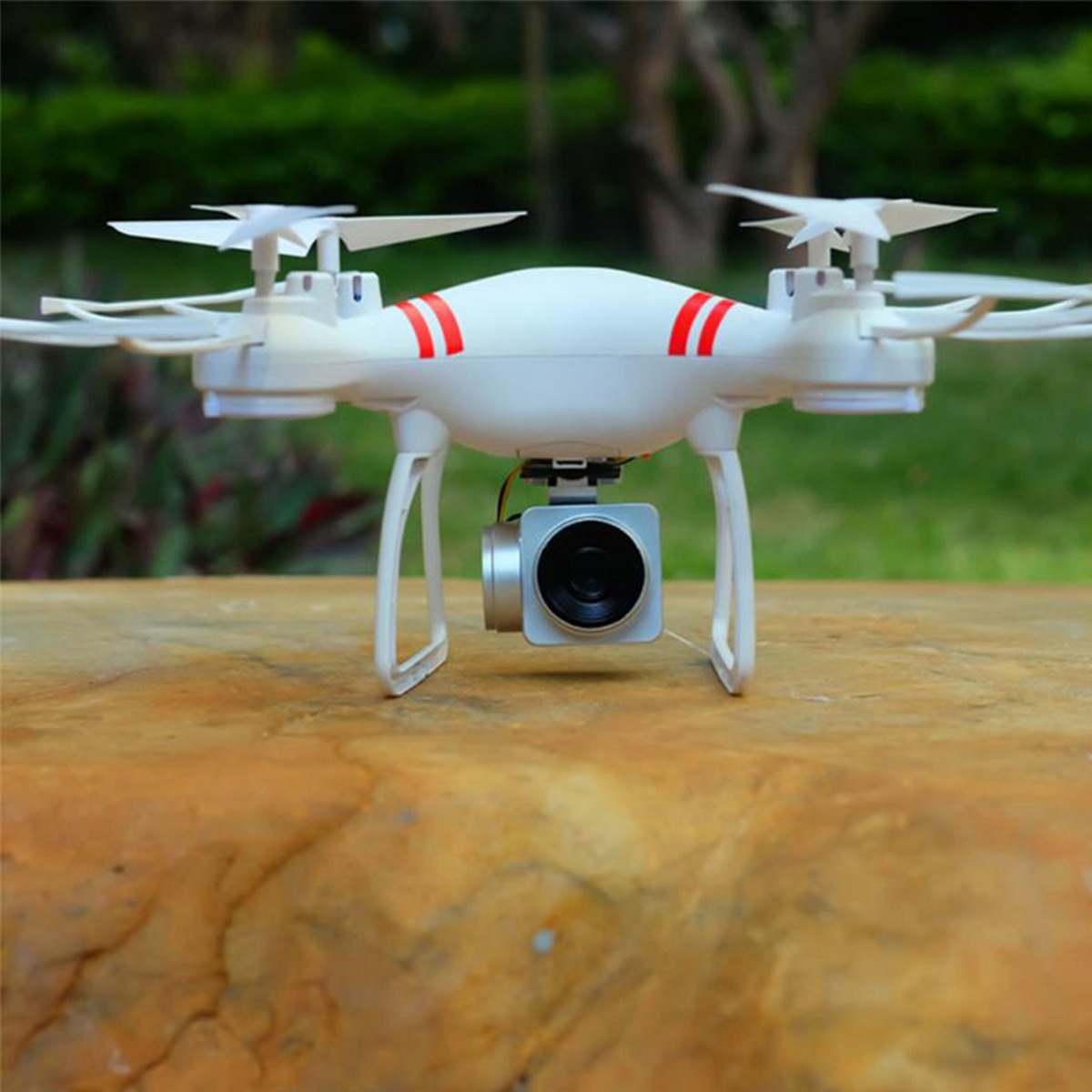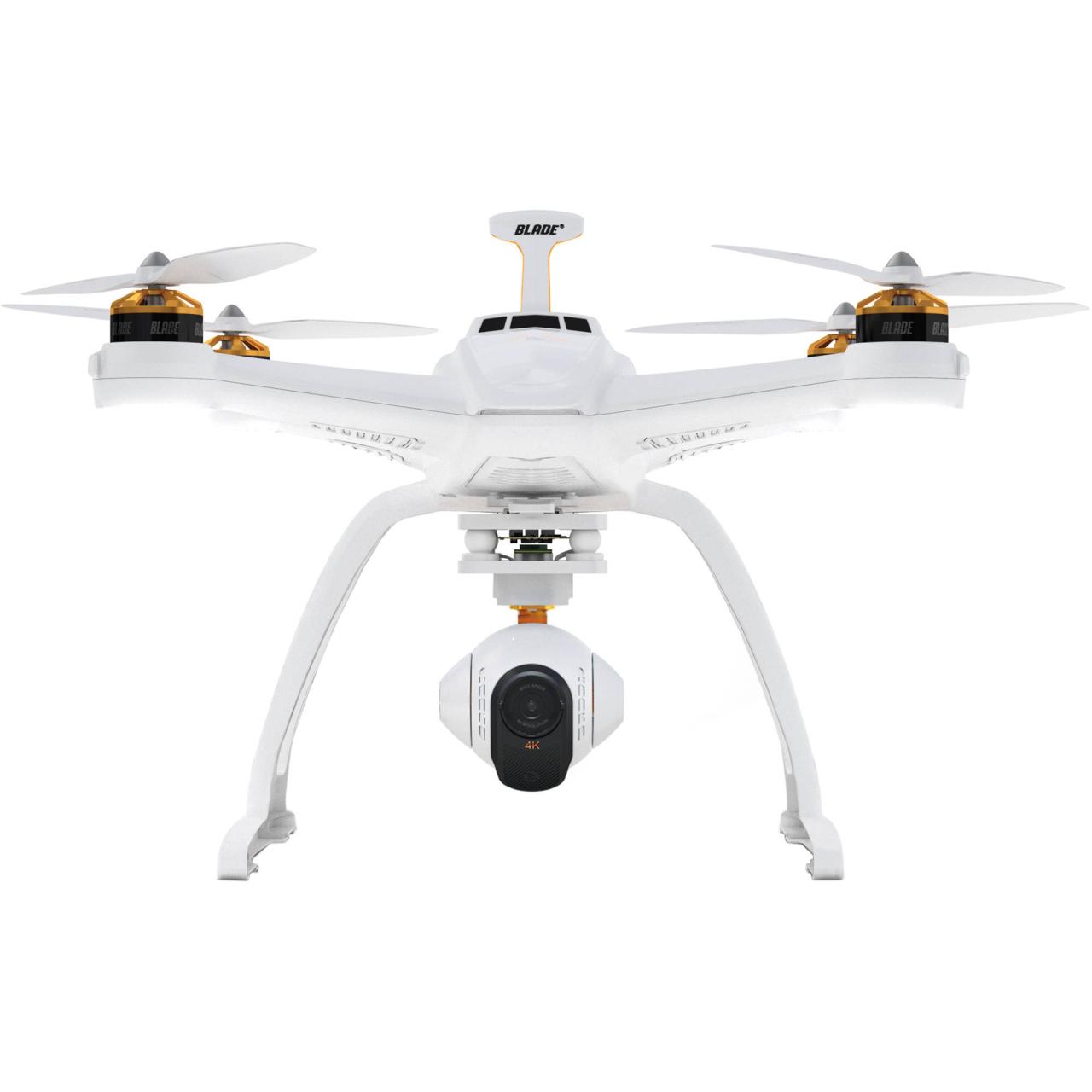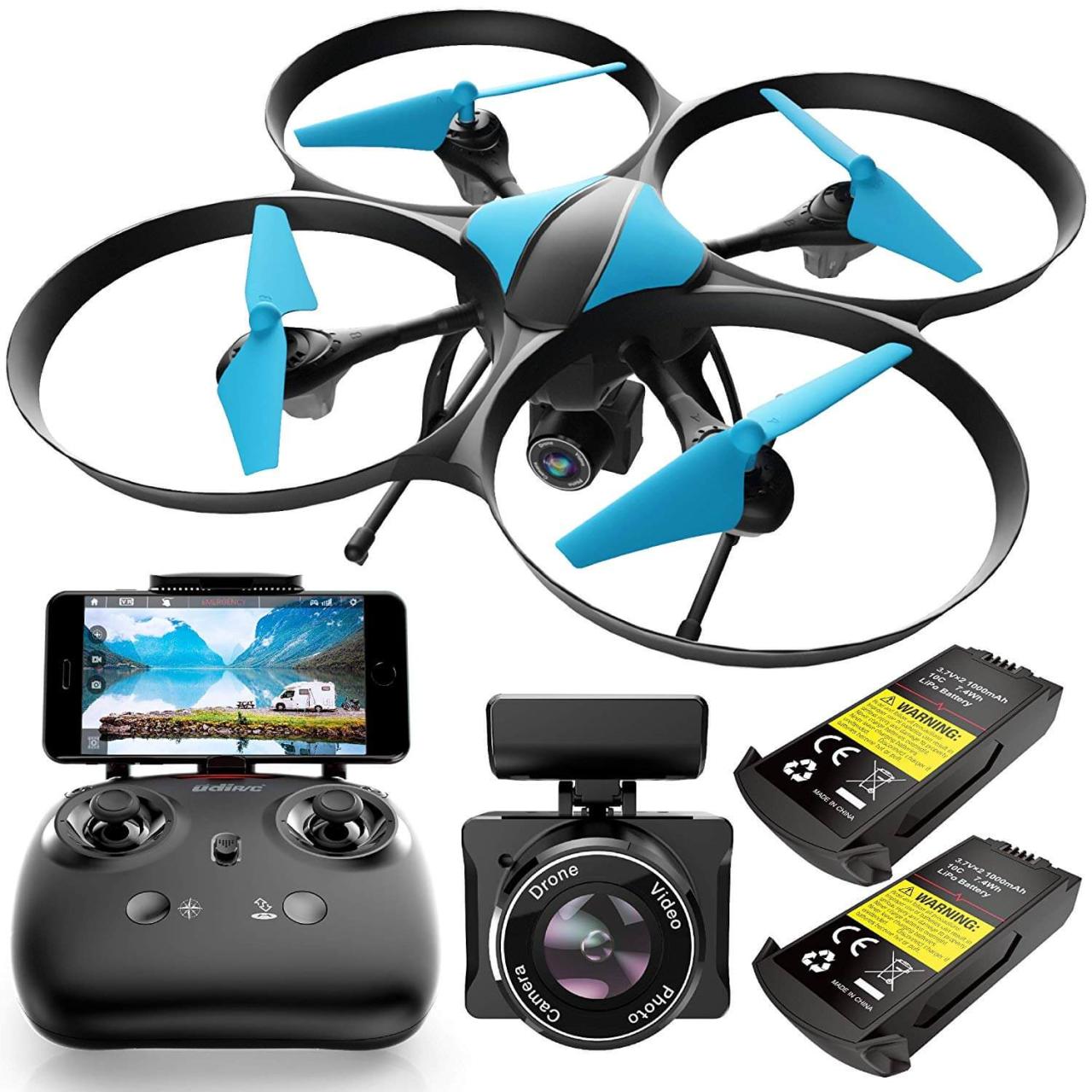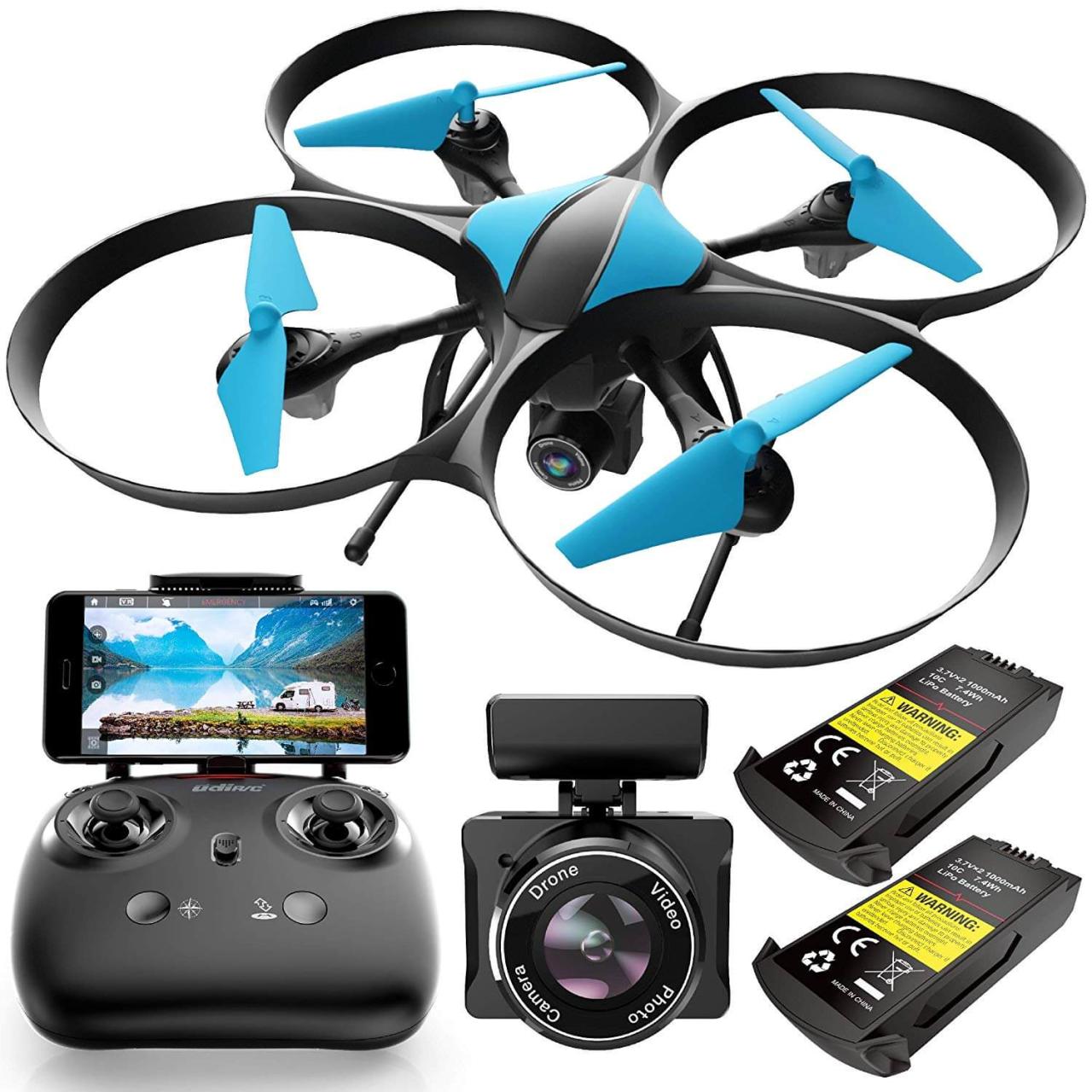Drone with camera technology has revolutionized various sectors, from filmmaking and photography to agriculture and infrastructure inspection. This guide delves into the diverse world of drones equipped with cameras, exploring their capabilities, applications, and the crucial legal and safety considerations surrounding their operation. We will examine different drone types, camera technologies, flight techniques, and post-processing workflows, providing a comprehensive understanding of this rapidly evolving field.
From understanding the nuances of camera sensors and image stabilization to mastering aerial cinematography and navigating legal regulations, this guide equips you with the knowledge to confidently utilize drone with camera technology. We will also explore the ethical implications and best practices for responsible drone operation, ensuring safe and effective utilization across diverse applications.
Types of Drones with Cameras
The world of drone cameras is diverse, offering a range of options for various needs and budgets. Understanding the different types available is crucial for selecting the right tool for your specific application.
Drone Classifications Based on Camera Capabilities
Drones are categorized based on several camera features, including resolution, image stabilization, and zoom capabilities. High-resolution cameras capture more detail, while effective stabilization systems ensure smooth, professional-looking footage. Zoom functionality allows for capturing subjects at varying distances.
Drone Types by Intended Use
Different drone models cater to specific user needs. Professional filmmakers require high-quality cameras with advanced features, while hobbyists might prioritize ease of use and affordability. Aerial surveying demands high-precision cameras and robust flight control systems.
Key Features and Specifications of Drone Models

Several factors differentiate drone models, including sensor size, processing power, and flight time. Larger sensors generally produce higher-quality images, while more powerful processors enable faster processing and more advanced features. Longer flight times allow for extended operation without needing to recharge.
| Type | Key Features | Typical Use Case | Price Range |
|---|---|---|---|
| Professional Filmmaking Drone | High-resolution camera, advanced stabilization, long flight time, obstacle avoidance | Film production, commercial advertising | $2,000 – $10,000+ |
| Hobbyist Photography Drone | User-friendly interface, good image quality, reasonable price | Personal photography, recreational flying | $500 – $2,000 |
| Aerial Surveying Drone | High-precision camera, GPS accuracy, data processing software | Mapping, construction, agriculture | $1,500 – $5,000+ |
| Inspection Drone | Thermal imaging camera, high zoom capability, compact design | Infrastructure inspection, search and rescue | $1,000 – $4,000+ |
Camera Technology in Drones
Understanding the technology behind drone cameras is essential for appreciating the quality and capabilities of different models. Sensor type, image stabilization, and lens choice significantly impact the final image or video.
Drone Camera Sensor Types
CMOS (Complementary Metal-Oxide-Semiconductor) and CCD (Charge-Coupled Device) are the two primary sensor types used in drone cameras. CMOS sensors are generally more energy-efficient and offer faster read speeds, while CCD sensors often provide better image quality in low-light conditions. However, the advancements in CMOS technology have largely made it the preferred choice in modern drones.
Image Stabilization Techniques
Effective image stabilization is crucial for smooth aerial footage. Mechanical stabilization uses a gimbal to isolate the camera from drone vibrations, while electronic image stabilization (EIS) uses software algorithms to compensate for camera shake. Many drones employ a combination of both methods for optimal results.
Drone Camera Lens Types
Wide-angle lenses capture a broader field of view, ideal for landscapes and establishing shots. Telephoto lenses allow for magnification of distant subjects, useful for wildlife photography or detailed inspections. The choice of lens depends on the intended application.
| Sensor | Resolution | Sensor Size | Low-Light Performance |
|---|---|---|---|
| Sony IMX214 | 12MP | 1/2.3″ | Good |
| Sony IMX586 | 48MP | 1/2″ | Excellent |
| Ambarella A12 | 4K | N/A (system on a chip) | Good |
Drone Flight and Camera Operation
Mastering drone flight and camera operation is key to capturing stunning aerial footage. Proper setup, stable flight, and skillful shot composition are crucial elements.
Setting Up and Calibrating a Drone’s Camera System
Before flight, ensure the camera is properly mounted and calibrated. This often involves adjusting settings within the drone’s software to optimize focus, exposure, and white balance. Following the manufacturer’s instructions is crucial for a successful setup.
Achieving Stable and Smooth Aerial Footage
Smooth footage requires a combination of factors, including proper gimbal settings, stable flight techniques, and wind mitigation strategies. Flying in calm conditions and using appropriate flight modes can minimize vibrations and create professional-looking results.
Best Practices for Composing Shots and Controlling Camera Movements

Effective shot composition involves considering elements like the rule of thirds, leading lines, and framing. Smooth camera movements, such as pans, tilts, and zooms, add dynamism to the footage. Practice and experimentation are essential for developing a keen eye for composition.
Drones equipped with cameras offer incredible versatility, from aerial photography to real-estate inspections. However, responsible operation is crucial, as highlighted by recent incidents like the one detailed in this news report: nj drone shot down. Understanding regulations and safety protocols is paramount for anyone using a drone with a camera to avoid similar situations and ensure safe and legal operation.
Using Drone Flight Modes for Specific Footage
Modern drones offer various flight modes that simplify the capture of specific shot types. For instance, “CineMode” provides smooth, cinematic movements, while “Point of Interest” allows for orbiting a specific subject. Understanding and utilizing these modes can significantly enhance your aerial footage.
- Power on the drone and controller.
- Calibrate the compass and IMU (Inertial Measurement Unit).
- Select the desired flight mode (e.g., CineMode, Point of Interest).
- Adjust camera settings (e.g., ISO, shutter speed, aperture).
- Begin flight and execute planned maneuvers.
- Record footage and monitor battery levels.
- Land the drone safely.
Legal and Safety Considerations
Operating a drone with a camera involves significant legal and safety responsibilities. Understanding and adhering to these regulations is crucial for responsible drone operation.
Legal Regulations and Restrictions
Regulations vary by location, often concerning airspace restrictions, registration requirements, and permitted flight altitudes. Always check local laws and regulations before flying.
Safety Protocols and Procedures
Prioritize safety by visually inspecting the drone before each flight, keeping a safe distance from obstacles and people, and maintaining awareness of surroundings. Never fly in adverse weather conditions.
Ethical Considerations
Ethical considerations involve respecting privacy, avoiding intrusive surveillance, and obtaining necessary permissions before filming in public or private spaces. Responsible drone operation requires a keen awareness of potential impacts on individuals and the environment.
- Register your drone with the appropriate authorities.
- Obtain necessary permits for commercial drone operations.
- Always maintain visual line of sight with your drone.
- Avoid flying near airports, power lines, and other hazards.
- Respect privacy and avoid filming individuals without their consent.
- Fly responsibly and consider the impact of your actions on others.
Applications of Drones with Cameras
Drones with cameras have revolutionized various industries, offering unique perspectives and enhancing efficiency. Their applications span diverse sectors, leveraging their aerial capabilities for diverse tasks.
Drone Applications Across Industries
In agriculture, drones monitor crop health and optimize irrigation. Construction companies use drones for site surveying and progress monitoring. Real estate agents utilize drone photography to showcase properties from unique angles.
Case Studies of Drone Photography and Videography
A vineyard in Napa Valley uses drones to monitor vine health, identifying areas requiring attention and optimizing yields. A construction firm in Chicago uses drones to track the progress of a skyscraper project, providing detailed progress reports to stakeholders. A real estate agency in Miami uses drone footage to showcase luxury beachfront properties, attracting potential buyers.
Utilizing Thermal Cameras
Thermal cameras on drones are valuable for search and rescue operations, locating missing persons or victims in disaster areas. They are also used for infrastructure inspection, identifying potential problems in bridges, power lines, and pipelines before they become critical issues.
Drone Performing a Specific Task
Imagine a drone equipped with a high-resolution camera meticulously inspecting a wind turbine farm. It autonomously flies between each turbine, capturing detailed images of blades and structural components. This allows for early detection of damage, minimizing downtime and preventing costly repairs. The benefits include increased safety for inspectors, reduced inspection time, and early detection of potential failures, leading to significant cost savings and increased operational efficiency.
Post-Processing and Editing

Post-processing and editing are crucial steps for enhancing drone footage and optimizing it for various platforms. These processes transform raw footage into polished, professional-looking results.
Importing and Organizing Drone Footage
Efficiently import and organize footage using media management software, creating a well-structured workflow for easier editing. Utilize file naming conventions to maintain clarity and organization.
Common Editing Techniques, Drone with camera
Color grading enhances the mood and visual appeal of the footage. Stabilization smooths out any remaining camera shake, improving the overall quality. Advanced techniques like color correction and dynamic range adjustment can further enhance the visuals.
Software Options for Editing Drone Footage
Popular options include Adobe Premiere Pro, DaVinci Resolve, and Final Cut Pro. Each software offers a range of features and tools to suit different skill levels and project requirements. The choice depends on individual preferences and project complexity.
Essential Post-Processing Steps
Essential steps include color correction, stabilization, noise reduction, and sharpening. Optimizing the footage for different platforms, such as YouTube or Instagram, might require additional adjustments in resolution, aspect ratio, and file format.
The integration of cameras into drone technology has unlocked unprecedented possibilities across numerous industries. This guide has explored the multifaceted aspects of drone with camera systems, from the technical specifications and operational procedures to the legal frameworks and ethical considerations. By understanding the capabilities and limitations of these systems, individuals and organizations can leverage their potential while adhering to safety and legal guidelines, ultimately contributing to responsible innovation and technological advancement.
FAQ Compilation: Drone With Camera
What is the flight time of a typical drone with a camera?
Flight times vary greatly depending on the drone model, battery size, and environmental factors. Expect ranges from 15-30 minutes for smaller models to over an hour for larger, professional drones.
Drones equipped with cameras offer a versatile platform for aerial photography and surveillance. The capabilities of these devices are constantly evolving, as seen with the development of more sophisticated models like the shahed drone , which highlights advancements in both camera technology and flight control systems. Ultimately, the increasing sophistication of drone-based camera systems continues to expand their applications across various sectors.
How do I choose the right drone with a camera for my needs?
Consider your budget, intended use (photography, videography, surveying, etc.), desired camera features (resolution, zoom, stabilization), and flight time requirements. Research different models and compare specifications before purchasing.
What software is best for editing drone footage?
Popular options include Adobe Premiere Pro, DaVinci Resolve, and Final Cut Pro. The best choice depends on your experience level and specific needs. Many offer free trials to help you decide.
Do I need a license to fly a drone with a camera?
Regulations vary by location. In many countries, registration and licensing are required for recreational and commercial drone operation. Check your local aviation authority’s website for specific requirements.
